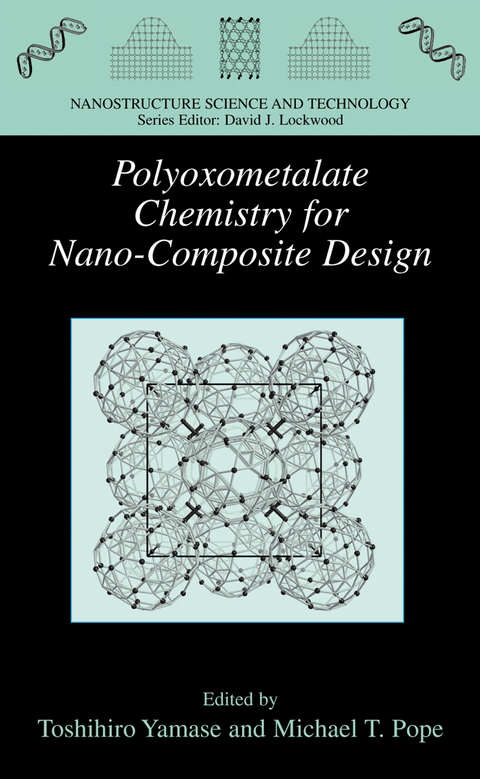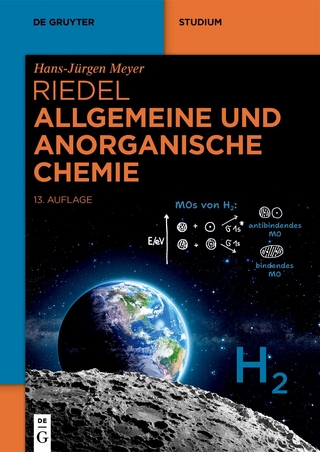
Polyoxometalate Chemistry for Nano-Composite Design
Springer-Verlag New York Inc.
978-1-4757-8718-4 (ISBN)
Chemists from several international polyoxometalate research groups discussed recent results, including: controlled self-organization processes for the preparation of nano-composites; electronic interactions in magnetic mixed-valence cryptands and coronands; synthesis of the novel polyoxometalates with topological or biological significance; systematic investigations in acid-base and/or redox catalysis for organic transformations; and electronic properties in materials science. It became evident during the symposium that the rapidly growing field of polyoxometalates has important properties pertinent to nano-composites. It is therefore easy for polyoxometalate chemists to envisage a "bottom-up" approach for their design starting from individual small-size molecules and moieties which possess their own functionalities relevant to electronic/magnetic devices (ferromagnetism, semiconductivity, prot- conductivity, and display), medicine (antitumoral, antiviral, and antimicrobacterial activities), and catalysis.
Self-Assembly and Nanostructures.- Chemistry with Nanoparticles: Linking of Ring-and Ball-Shaped Species.- Prospects for Rational Assembly of Composite Polyoxometalates.- Composite Materials Derived from Oxovanadium Sulfates.- Solid State Coordination Chemistry: Bimetallic Organophosphonate Oxide Phases of the M/Cu/O/RPO32? Family (M=V, Mo).- Polyoxothiomolybdates Derived from the {Mo2O2S2(H2O)6}2+ Building Unit.- Lanthanide Polyoxometalates: Building Blocks for New Materials.- Organometallic Oxides and Solution Chemistry.- Dynamics of Organometallic Oxides: From Synthesis and Reactivity to DFT Calculations.- An Organorhodium Tungsten Oxide Cluster with a Windmill-Like Skeleton: Synthesis of [(Cp*Rh)4W4O16] and Direct Observation by ESI-MS of an Unstable Intermediate [Cp*RhClWO4].- Role of Alkali-Metal Cation Size in Electron Transfer to Solvent-Separated 1:1 [(M+)(POM)] (M+=Li+, Na+, K+) Ion Pairs.- New Classes of Functionalized Polyoxometalates: Organo-Nitrogen Derivatives of Lindqvist Systems.- Polyoxometalate Speciation — Ionic Medium Dependence and Complexation to Medium Ions.- Some Smaller Polyoxoanions. Their Synthesis and Characterization in Solution.- Magnetic, Biological, and Catalytic Interactions.- Polyoxometalates: From Magnetic Models to Multifunctional Materials.- Magnetic Exchange Coupling and Potent Antiviral Activity of [(VO)3(SbW9O33)2]12?.- Tetravanadate, Decavanadate, Keggin and Dawson Oxotungstates Inhibit Growth of S. cerevisiae.- Selective Oxidation of Hydrocarbons with Molecular Oxygen Catalyzed by Transition-Metal-Substituted Silicotungstates.- Transition-Metal-Substituted Heteropoly Anions in Nonpolar Solvents — Structures and Interaction with Carbon Dioxide.- Polyoxometalates and Solid State Reactions at Low Heating Temperatures.-Structure Determination of Polyoxotungstates Using High-Energy Synchrotron Radiation.
| Reihe/Serie | Nanostructure Science and Technology |
|---|---|
| Zusatzinfo | 147 Illustrations, black and white; VIII, 235 p. 147 illus. |
| Verlagsort | New York, NY |
| Sprache | englisch |
| Maße | 178 x 254 mm |
| Themenwelt | Naturwissenschaften ► Chemie ► Anorganische Chemie |
| Naturwissenschaften ► Chemie ► Physikalische Chemie | |
| Naturwissenschaften ► Chemie ► Technische Chemie | |
| Naturwissenschaften ► Physik / Astronomie ► Festkörperphysik | |
| Technik ► Maschinenbau | |
| ISBN-10 | 1-4757-8718-9 / 1475787189 |
| ISBN-13 | 978-1-4757-8718-4 / 9781475787184 |
| Zustand | Neuware |
| Haben Sie eine Frage zum Produkt? |
aus dem Bereich


